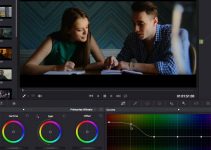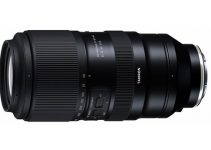It looks like the Blackmagic Pocket Cinema Camera 6K Pro is in the hands of many creators and they are taking a good look at whether this “Pro” model is worth the upgrade. Blackmagic absolutely made some much-needed improvements over the original Pocket 6K, though with those changes came a bump to the price. If you already own a 6K the choice also becomes much harder.
Florent Piovesan of Of Two Lands is in that group of people lucky enough to have both a 6K and 6K Pro and put together a great video showing off the differences and attempting to answer the question of if it is worth it.
The Similarities
- 6K Super 35mm Sensor
- Dual ISO 400/3200
- Blackmagic RAW
- Variety of resolutions and frame rates
- 13 stops of dynamic range
- Button layout and menu
While you definitely can see some major physical changes, at first glance they look practically the same. The Pro does have some extra heft.
The Differences
- Pro upgrades the 5” screen to be tilting and have 1500-nit brightness
- Pro adds 2/4/6-stop ND filters
- Pro uses larger NP-F L-series batteries
- Pro has optional electronic viewfinder and updated battery grip
- Pro has additional mini-XLR input
A smaller thing is that the 6K Pro comes stock with Gen 5 color science – though that has come to the original 6K in a firmware update.
Pros of the 6K Pro
You can see in the differences section where the 6K Pro steps things up. This is a ton of improvement for the user and should actually impact overall usability. Generally, the 6K Pro is much easier to use right out of the box compared to the original.
Another aspect is that while the 6K Pro is physically larger, if you consider the extra parts you might be able to do away with, like an on-camera monitor, battery pack, and ND filters, it’s possible with the new camera you will end up saving on space and weight.
All these built-in functions can be limiting to overall modularity.
Pros of the Regular 6K
This camera is smaller and designed to be built up. You can definitely make sure to use your own battery pack, monitor, cage, and more to create a system that might work better for you. You can also break it down into a smaller package for some shoots. This could matter for use on a gimbal or drone.
One thing we shouldn’t forget is that the regular 6K is still cheaper by about $500. Plus, there already is an ecosystem of accessories available.
The other point made in the video relates to the color science, but this has since been rectified in Blackmagic Camera v7.3.
Gen 4 vs Gen 5
Since this has been corrected with the latest camera updates, this section should serve as a good explainer as to what has changed. When comparing the video side-by-side you can see the difference between how the generations differ. You can see how Gen 5 looks a lot flatter out of the camera. This can make it a bit more difficult to work with, but there are some advantages in color accuracy and tone once you adjust.
Keep in mind, these tests are done with ProRes files—not Blackmagic RAW. If you shoot BRAW you may have a different experience with how the color science works.
Final Thoughts
For documentary and run-and-gun work the 6K Pro has plenty of advantages that make it worth the upgrade. Being able to run it without a rig and still get features like ND and a tilting screen you will be much happier. If you have no problem making a rig and already have the gear to build it, you might be better off sticking with the regular 6K.
Which one would you pick?
[source: Of Two Lands]
Order Links:
- Blackmagic Design Pocket Cinema Camera 6K Pro (B&H, Amazon), Adorama)
- Blackmagic Design Pocket Cinema Camera 6K (B&H, Amazon, Adorama)
Disclaimer: As an Amazon Associate partner and participant in B&H and Adorama Affiliate programmes, we earn a small comission from each purchase made through the affiliate links listed above at no additional cost to you.



